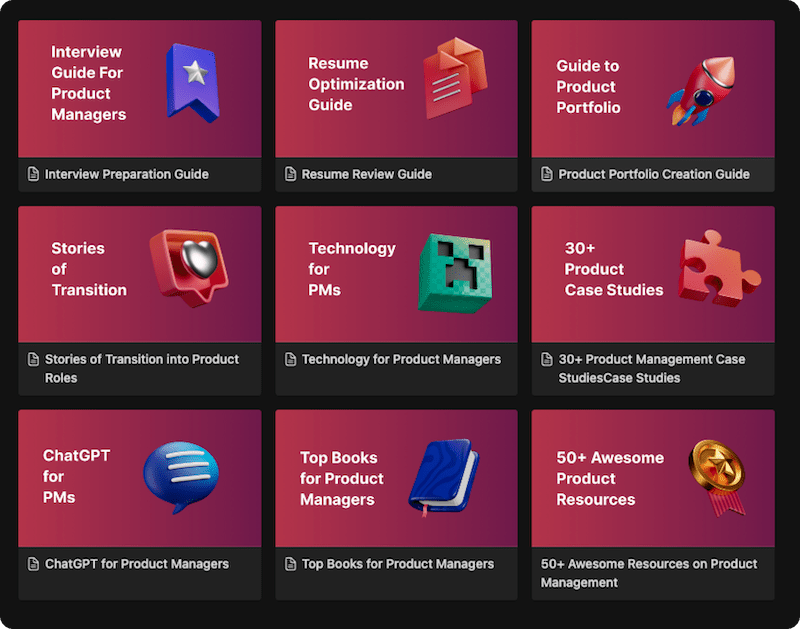Think of a classic Swiss Army Knife. It’s a marvel of design-a knife, a can opener, a screwdriver, all in one elegant package. It does a few things exceptionally well. But what happens if you keep adding more tools? A fish scaler, a magnifying glass, a wood saw, a tiny fork… Soon, your elegant tool becomes a heavy, clunky, unusable metal brick that’s difficult to hold and terrible at everything, including its original job as a simple knife. This process of a useful product becoming overwrought and unusable is exactly what happens with Feature Bloat.
Feature bloat is the silent killer of even the most successful products. It’s a slow, insidious creep that happens one “good idea” and one “small feature request” at a time. It’s born from the best of intentions-to please every customer, to match every competitor, to constantly innovate-but it often leads to a product that is confusing, slow, and a chore to use.
This guide is your complete playbook for understanding and fighting this common product disease. We will explore what feature bloat is, the dangerous consequences it has, why it happens, and most importantly, a practical framework for building a “feature immune system” to keep your product lean, focused, and loved by your users.
Definition & Origin
The term “feature bloat” emerged from the software development world in the 1990s. As personal computers became more powerful and storage became cheaper, there was a race among software companies (like Microsoft, Adobe, etc.) to pack as many features as possible into their products to justify upgrades and dominate the market. This led to behemoth applications like Microsoft Word and iTunes becoming famously cluttered with toolbars and functions that the average user never touched, sparking the conversation around the negative impacts of an unchecked “more is better” mindset.
The Dangers of Feature Bloat: Why It’s a Silent Killer
Feature bloat isn’t just a minor inconvenience; it can inflict serious, long-term damage on your product and business.
- Degraded User Experience (UX): This is the most immediate consequence. A bloated product is a confusing product. Simple tasks become hidden behind complex menus, the interface becomes cluttered, and the user’s cognitive load increases, leading to frustration and abandonment.
- Increased Technical Debt and Maintenance Costs: Every feature you add must be built, tested, maintained, and updated. A bloated product has a massive, complex codebase that is more prone to bugs and more expensive to manage.
- Slower Product Performance: More features often mean more code, which can lead to slower load times and a less responsive application, directly harming the user experience.
- Diluted Value Proposition: When your product tries to be everything to everyone, it becomes great at nothing. Feature bloat obscures the core value that made your product successful in the first place, making it harder for new users to understand what it’s for.
- Higher Customer Churn: New users are easily overwhelmed and fail to get started. Existing users become frustrated when the simple product they once loved becomes a complex monster. Both lead to higher churn.
How It Works: A 4-Step Guide to Preventing Feature Bloat
Preventing feature bloat is not about stopping innovation; it’s about practicing strategic discipline. Here is a framework for building a “feature immune system.”
Step 1: Establish a Clear Product Vision and Strategy
Your product vision is your North Star. It defines the core problem you are solving, who you are solving it for, and what your unique perspective is. Every new feature idea must be evaluated against this vision. If a feature does not directly support the core vision, it should be rejected, no matter how great it sounds in isolation.
Step 2: Implement a Ruthless Prioritization Framework
You need an objective system for deciding what to build. Don’t rely on gut feelings or the “loudest voice in the room.” Use a structured framework like:
- RICE: (Reach, Impact, Confidence, Effort) – A quantitative method for scoring feature ideas.
- MoSCoW: (Must-have, Should-have, Could-have, Won’t-have) – A qualitative method for categorizing feature importance.
- Jobs to Be Done (JTBD): Focus only on features that help your customer achieve their core “job.”
Step 3: Conduct Regular Feature Audits
You can’t just prevent future bloat; you need to address existing bloat. A feature audit is the process of analyzing your product’s existing features to determine their value. Use product analytics to answer:
- How many users are using this feature?
- How often are they using it?
- Does using this feature correlate with higher retention?
For features that have very low usage and low impact, you should consider killing them. This is the “Marie Kondo” method for your product: if a feature no longer sparks joy (or value), thank it for its service and let it go.
Step 4: Master the Art of Saying “No” (or “Not Now”)
This is the most important skill for a product manager. You will always have more feature requests than you can build. Learn to say “no” gracefully to customers, stakeholders, and even your CEO. Frame your “no” in the context of the product strategy. It’s not “we won’t build your idea”; it’s “we are currently focused on solving this other, higher-priority problem for all our users. Your idea is great, and we’ve added it to our backlog to consider for the future.”
Mistakes to Avoid: The Causes of Feature Bloat
Feature bloat is a disease with common causes. Understanding them is the first step to avoiding them.
- No Clear Strategy: Without a clear vision, every idea seems like a good idea. The product drifts aimlessly, accumulating features without a coherent purpose.
- Saying “Yes” to Every Customer: Trying to please every single customer, especially large enterprise clients who demand custom features, is a fast track to a bloated, incoherent product.
- “Keeping Up with the Joneses”: Mindlessly copying every feature your competitors launch without considering if it fits your strategy leads to a generic, me-too product.
- Confusing Complexity with Value: The false belief that adding more features makes the product more valuable or “premium.” In reality, simplicity and focus are often far more valuable.
- The “Sunk Cost” Fallacy: Continuing to maintain and support a feature that nobody uses simply because “we spent a lot of time building it.”
Examples & Case Studies: Cautionary Tales of Feature Bloat
The history of software is filled with famous examples of feature bloat.
Microsoft Word is the quintessential cautionary tale. It began as a relatively simple word processor. Over decades, in an effort to appeal to every possible user in every possible industry, it accumulated thousands of features. The result was a program with a labyrinth of toolbars, menus, and settings. While incredibly powerful, the average user only ever touched about 5% of its functionality, and the sheer complexity of the interface could be overwhelming.
iTunes is another classic example. It started as a clean, simple app to do one thing: manage your digital music library and sync it to your iPod. Over time, Apple added the iTunes Store, movies, podcasts, TV shows, audiobooks, and eventually Apple Music. The app became a slow, confusing, and universally disliked behemoth that tried to do too many things at once. Apple eventually acknowledged this by breaking iTunes up into separate, focused apps (Music, Podcasts, TV) in macOS Catalina.
Related Concepts & Comparisons
Feature Bloat vs. a Robust Feature Set
Having a lot of features is not automatically a bad thing. The key difference is coherence and value.
- A Robust Feature Set is found in a product like Adobe Photoshop. It has thousands of features, but they are all in service of a single, clear goal (professional image editing), and its target users (power users) derive immense value from that depth.
- Feature Bloat is when the features are unfocused, serve too many different user types, detract from the core value proposition, and make the product harder to use for the primary user.
Conclusion
We began with the cautionary tale of the Swiss Army Knife, a perfect tool ruined by the relentless addition of more. This is the great paradox of feature bloat: it is a disease born from good intentions. The desire to listen to every customer, to match every competitor, and to constantly add value is noble, but without a strong strategic filter, it leads to a product that is heavy, confusing, and ultimately, less valuable.
Preventing feature bloat is an act of strategic courage and discipline. It is the conscious choice to define who you are serving and what core problem you are solving, and the courage to say “no” to everything else. It requires a mindset that understands that a product’s elegance and power often come from what it doesn’t do, not just what it does.
The greatest product leaders are not just builders; they are curators. They understand that their job is not only to add to the product, but to protect it-to protect its core value, its simplicity, and its user’s precious attention. In a world of overwhelming complexity, the most loved products will always be the ones that deliver a clear, focused, and elegant solution to a real human need.
FAQ’s
They are very closely related. Feature creep is the process-the slow, gradual, and uncontrolled addition of new features beyond the original scope of a project. Feature bloat is the end result-the state of the product after it has suffered from years of feature creep.
Look for these warning signs: new users are overwhelmed during onboarding, your core user base complains that the product has become too complex, your product analytics show that a large percentage of your features are rarely or never used, and your development team is spending more time maintaining old features than building new ones.
Acknowledge their need and show empathy. Explain your product’s core vision and how your current roadmap is focused on delivering the most value to the broadest set of users. Offer to add their request to your backlog for future consideration, and if possible, suggest a workaround using your existing features.
Yes, but it’s difficult and requires courage. The primary method is to conduct a feature audit to identify unused or low-value features. Then, you must be willing to “sunset” or remove those features. This can be painful and may upset the small group of users who still use them, but it’s often necessary to improve the experience for the majority.
Not at all. Adding new, valuable features is essential for innovation and growth. It becomes a problem only when the features are added without a clear strategy, don’t solve a real user need, or make the product harder to use.
The Pareto Principle, or the 80/20 rule, often applies to software features. It suggests that about 80% of your users will only use about 20% of your product’s features. This is a powerful mental model that highlights why focusing on and perfecting that core 20% is so critical.
Learn better with active recall quiz
How well do you know What is Feature Bloat? Let’s find out with this quick quiz! (just 10 questions)


